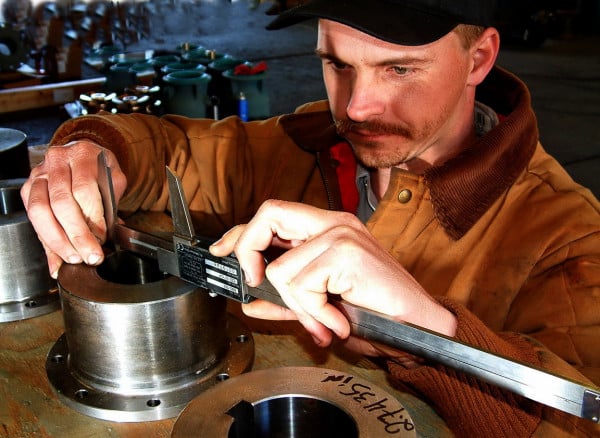Source Inspection is the process of providing quality surveillance of materials, equipment, and fabrications being supplied for use in facilities. It provides confidence to purchasers that the materials and equipment they are purchasing from their suppliers meet the minimum requirements as specified in contractual agreements. Safety is one of the most important objectives of source inspection. As such, a source inspector should be well-informed and fully understand the safety program(s) of their facility in order to minimize the possibility of injury.
In the oil & gas, petrochemical, and chemical processing industries, source inspection is a vital part of the quality assurance process of the overall quality assurance / quality control (QA/QC) function.
Techniques and Methodology

Quality Specified
Since source inspection is part of the QA process, the source inspector may participate in pre-purchase activities with potential suppliers where specific design, fabrication, and QA/QC requirements are discussed. A source inspection management plan should be developed that outlines everything expected of a supplier to assure that the product being delivered meets the purchaser’s specifications, codes, standards, and all other contractual requirements. This plan can then be used to vet and qualify suppliers that can meet the established requirements.
Quality Assurance Implemented
The activities outlined in the source inspection plan should include an equipment risk assessment which helps determine how much source inspection is needed depending on the criticality of the equipment for the project. The risk assessment should consider the consequence of failure of the equipment while in service, failure mode(s) of the equipment, fabrication complexity, and shipment and preservation.
An inspection and test plan (ITP) should be developed for each type of equipment to be inspected. This should include all inspection activities to be performed by the source inspector and the risk level involved. It should also include equipment-specific acceptance criteria and requirements for sign-off by the source inspector, supplier, and client.
Source Inspected
Before moving forward with the inspection and test plan (ITP), source inspectors should review the project documents. These documents may include contractual agreements, engineering design documents, company standards, industry codes and standards, welding procedures, NDE procedures, and project schedules.
It is good practice for the source inspector to monitor the supplier’s QC activities to ensure they are properly following the ITP. These activities may include welding inspections, nondestructive examinations, pressure and leak tests, and any other tests specified in the ITP. Inspection reports are provided by the source inspector to the supplier throughout the course of the QA process.
Defects Eliminated
If the source inspector discovers deviations from the agreed-upon project specifications, the deviations should be documented in a nonconformance report, including photos, a description of the nonconformity, and the impact on the product. This report should then immediately be distributed to the supplier and purchaser for review.
Quality Delivered
Source inspectors should verify that all components of the ITP are complete and in accordance with the project documents. These components should include the following:
- Work specified as listed and performed in accordance with the contractual agreements
- Nonconformance reports resolved by the QA/QC representatives from the supplier and purchaser
- Required QC activities completed by the supplier
- Painting and coating activities completed and meet required quality specifications
- Shipping instructions implemented
- Preservation plan reviews and implemented
Relevant Codes, Standards, and Best Practices
API’s “Guide for Source Inspection and Quality Surveillance of Fixed Equipment” may be used as the basis for providing a systematic approach to risk-based source inspection to provide confidence that materials and equipment being purchased meet the minimum requirements as specified in the project documents and contractual agreements.
References
- Reynolds, J., 2017, “The Role of the Source Inspector in the Quality Assurance Process,” Inspectioneering Journal, The Woodlands, Texas, 23(5), pp. 14-16.
Relevant Links
- API Individual Certification Programs: Source Inspector Fixed Equipment (SIFE)
- API Individual Certification Programs: Source Inspector Electrical Equipment (SIEE)
- API Individual Certification Programs: Source Inspector Rotating Equipment (SIRE)
Topic Tools
Share this Topic
Contribute to Definition
We welcome updates to this Integripedia definition from the Inspectioneering community. Click the link below to submit any recommended changes for Inspectioneering's team of editors to review.
Contribute to Definition
























